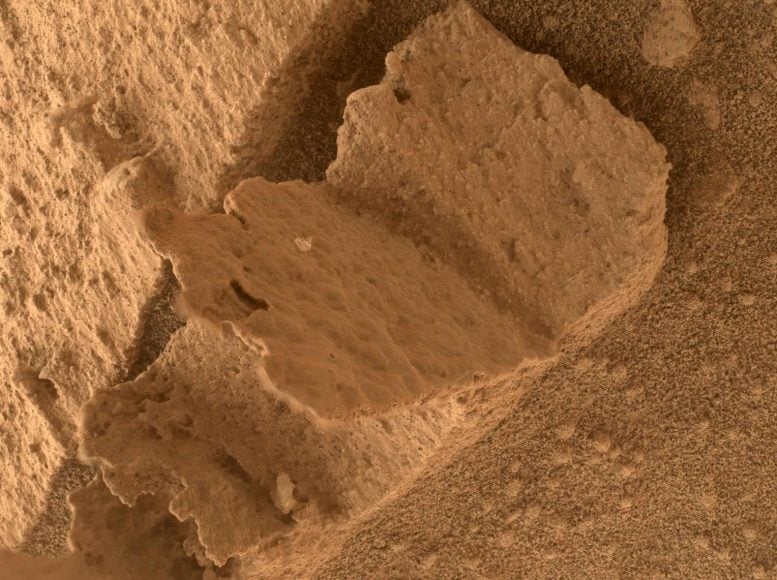
NASA’s Curiosity Mars rover took this close-up view of a rock nicknamed “Terra Firme” that looks like the open pages of a book, on April 15, 2023, the 3,800th Martian day, or sol, of the mission, using the Mars Hand Lens Imager (MAHLI) on the end of its robotic arm. The rock is about an inch across (2.5 centimeters). Credit: NASA/JPL-Caltech/MSSS
On its 3,800th sol, NASA’s Curiosity Mars rover photographed a book-like rock, “Terra Firme,” a result of water depositing harder minerals and wind erosion shaping it over time.
NASA’s Curiosity Mars rover took this close-up view of a rock nicknamed “Terra Firme” that looks like the open pages of a book, on April 15, 2023, the 3,800th Martian day, or sol, of the mission, using the Mars Hand Lens Imager (MAHLI) on the end of its robotic arm. The rock is about an inch across (2.5 centimeters).
Rocks with unusual shapes are common on Mars, and often were formed by water seeping through cracks in a rock in the ancient past, bringing harder minerals along with them. After eons of being sand-blasted by the wind, softer rock is carved away and the harder materials are all that’s left.
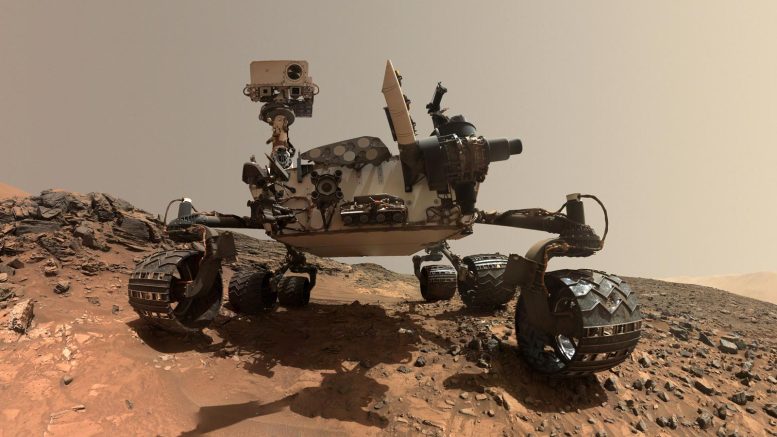
Curiosity set out to answer the question: Did Mars ever have the right environmental conditions to support small life forms called microbes? Early in its mission, Curiosity’s scientific tools found chemical and mineral evidence of past habitable environments on Mars. It continues to explore the rock record from a time when Mars could have been home to microbial life. Credit: NASA
NASA’s Curiosity Mars rover is a car-sized, mobile laboratory that was launched in November 2011 and successfully landed on Mars in August 2012. It is part of NASA’s Mars Science Laboratory (MSL) mission, designed to explore the Gale Crater on Mars and analyze its climate, geology, and the potential for past and present habitability. Equipped with state-of-the-art scientific instruments, including cameras, spectrometers, and sensors, Curiosity has been conducting experiments and collecting data to help scientists understand the planet’s history and evolution. Its most significant discoveries include evidence of ancient riverbeds and the presence of organic molecules, which suggest the possibility that Mars once harbored microbial life.
NASA’s Jet Propulsion Laboratory (JPL), a division of the California Institute of Technology (Caltech) in Pasadena, California, leads the Curiosity mission. Curiosity captured the image using a camera called the Mars Hand Lens Imager (MAHLI), located on the end of its robotic arm. It is essentially the rover’s version of the magnifying hand lens that geologists usually carry with them into the field. MAHLI was built by Malin Space Science Systems in San Diego.

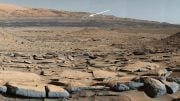
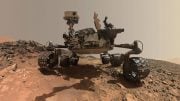
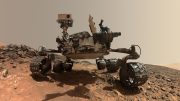
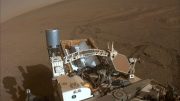
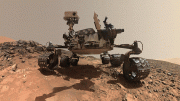

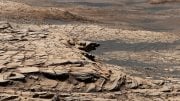
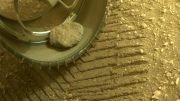
It speaks volumes when a rover equipped with state-ot-the-art technology is reduced to taking pictures of silly little things of little real scientific value. As far as can be ascertained there have only been two in-depth studies of the mineralogy of martian sediments by Curiosity. And none by Perseverance. Mineralogy, petrology and chemical composition should be a priority not landscape “postcard” photos or photos that look like something they obviously are not.
“lt speaks volumes” lolol 🙂